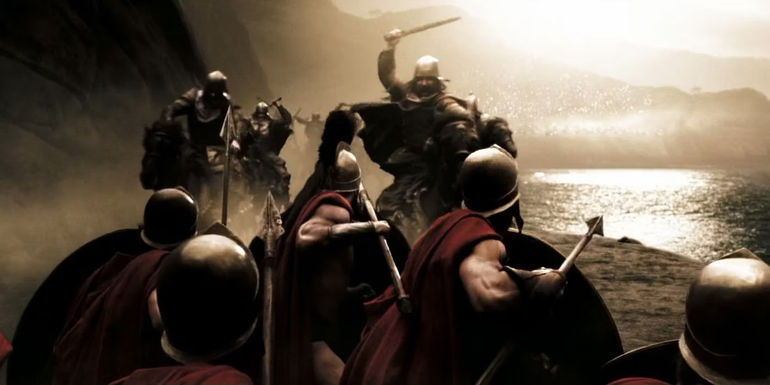
The Historical Inaccuracies of 300: Unveiling the Truth Behind the Epic Film

A deep dive into the historical inaccuracies of the 2006 film 300, exploring the discrepancies between the movie and the real events of the Battle of Thermopylae.
The Myth vs. Reality of 300
The 2006 historical fantasy film 300 provides a retelling of the infamous Battle of Thermopylae, and many viewers wonder if 300 is a true story. The truth is complex, as 300 is based on real events, but just like the source material \\u2014 the graphic novel of the same name by Frank Miller \\u2014 it takes significant creative liberties.
Leonidas wielding a sword and roaring in rage in 300
300 is well-known for its unique filming techniques that make the film feel like the comic book series it is loosely based on, also called 300. While 300 is a highly entertaining film with incredible shots and strong performances, it is probably one of the most historically inaccurate movies. 300 is meant to exaggerate history, so it's no surprise that the film ends up being wildly different from the actual Battle of Thermopylae. The Battle of Thermopylae has long been one of the most romanticized battles in history and for good reason.
The Spartans heading into battle in 300
While the film does fictionalize a large part of the story, many Greeks indeed sacrificed themselves to slow the Persian army at the pass of Thermopylae. 300 gets other elements right as well, such as Ephialtes' betrayal of the Greeks, but the majority of the film's overall historical representation of the Battle of Thermopylae is inaccurate.
Battling on the cliff in 300
The Distorted Representation of Spartan Society
The beginning of 300 depicts Leonidas (Gerard Butler) going through a Spartan educational and combat training program known as the agoge. This training program involved sons being taken from their mothers and thrown into dangerous situations, like walking through the wilderness shoeless in winter. However, the firstborn son of any given family was always exempt from the agoge, and Leonidas specifically, who was a future king, would not have been subjected to the program. Moreover, 300 implies the final rite of passage after the agoge was to kill a wolf, but in reality, Spartans came of age by killing unarmed slaves known as helots.
Young Leonidas being taken away in 300.
The altering of the Spartan agoge rituals points to a larger issue with 300. The film tends to idealize Spartan society dangerously. 300 makes the Spartans seem like a glorious group of altruistic warriors without flaws. In reality, Spartan culture was oppressive and highly prejudiced. Spartans routinely engaged in infanticide and pederasty, and they enslaved a large portion of their population. While 300 is one of Gerard Butler's best action movies, its representation of ancient Sparta is dangerously inaccurate.
Spartan soldiers hold spears and shields in 300
Misconceptions About the Battle of Thermopylae
Another aspect of Spartan culture that 300 gets wrong is the attire of Spartan warriors. 300 depicts the Spartan army fighting practically naked, whereas in real life, the Spartan warriors donned breastplates and long tunics that would have provided critical protection in battle. In 300, the Spartan warriors wear nothing but a small undergarment and a red cape. They also have helmets in the film, though they are often removed, even during the battle.
The Persians in 300 are also strongly misrepresented. Much of the Persian army is depicted as beastly or disfigured in some way, and 300 even throws in some random giants and monsters to shake things up. It also depicts the Persian Emperor, Xerxes I (Rodrigo Santoro), as a giant with a multitude of piercings. Xerxes was considered a God-King by the Persians, so it makes sense to exaggerate his size. However, his clothing and piercings are ahistorical and nowhere near what the real Xerxes would have looked like. The Persian army is essentially transformed into an army of fantasy-style villains.
Xerxes standing with his arms open in 300
Another instance in which 300 is historically inaccurate is its depiction of the Spartan Ephors (magistrates who ruled in partnership with the kings) opposing Leonidas' attempts to fight the Persians. There is no evidence of the Ephors opposing Leonidas' war efforts. The Greco-Persian wars had been ongoing for years by the time of Xerxes' invasion in 300, and everyone in Greece was perfectly aware of the threat posed by Persia. None of them would have realistically opposed resistance to the invading force. 300's depiction of the Ephors is likely meant to make Leonidas more heroic by providing additional opposition within Greece.
Leonidas with his group in 300














